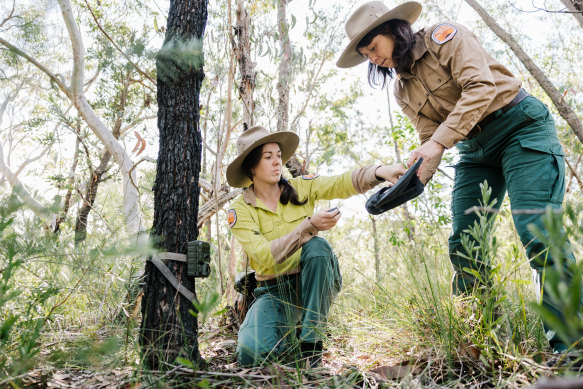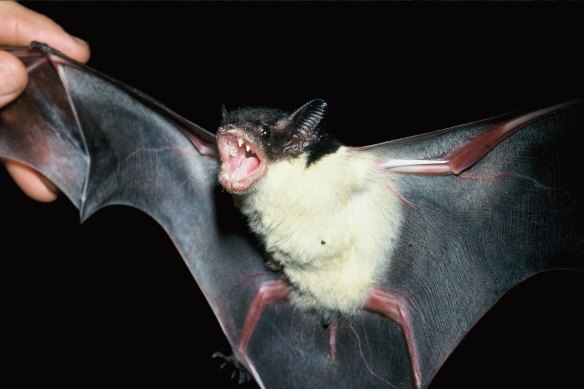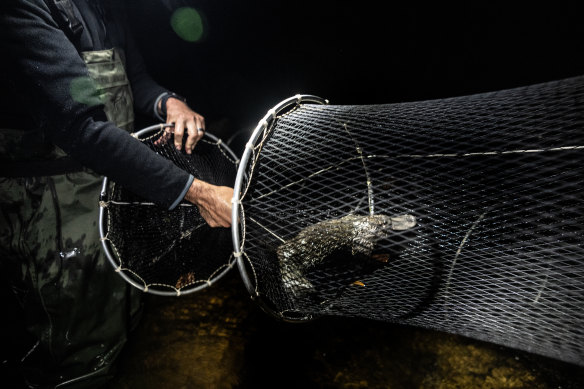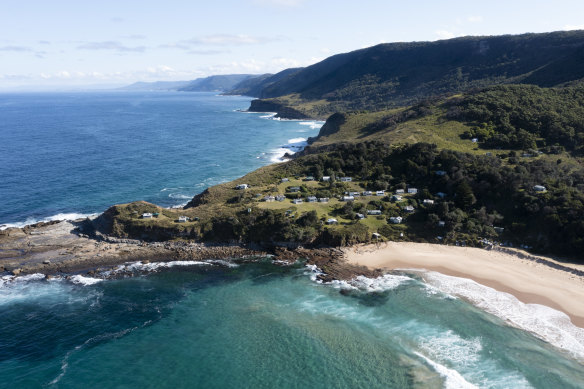Royal National Park a haven for native species, environmental stocktake shows
The biggest ecological survey to date of Royal and Heathcote national parks has revealed the area is a haven for threatened species, including two mammals previously not detected in the parks.
But the ecosystem just south of Sydney has lost six mammal species since European arrival, as feral foxes and deer wreak havoc.

National Parks and Wildlife Service ecologists have carried out the biggest survey to date of flora and fauna in Royal National Park, Heathcote National Park and Garawarra State Conservation Area.
The NSW government will release the EcoHealth Scorecard on Monday, covering the Royal National Park and the neighbouring Garawarra State Conservation Area and Heathcote National Park.
It is the first of eight ecological studies for the state and part of what Environment Minister Penny Sharpe called “a big investment in science” to improve the management of national parks.
The NSW National Parks and Wildlife Service set up 40 permanent monitoring sites in the Royal-Heathcote-Garawarra area with cameras and acoustic monitors. The program captured more than one million images, 2500 bird records and 2000 plant records in the first study of what is expected to become a regular series.

The area is a refuge for the threatened eastern pygmy possum.Credit: Justin Mallee/DCCEEW
Atticus Fleming, head of the NSW National Parks and Wildlife Service, said the project was unprecedented in scale and term.
“Measuring what’s happening to the health of our parks is really important for us to know what we need to do with our management, and in Royal, we’re already seeing how that starts to play out,” Fleming said.
“The level of fox activity and distribution was probably higher than we’d anticipated, and so we’ve already changed our fox baiting program.”
The study found red foxes – known from other research to prey on small native mammals and turtles – were active in 85 per cent of the surveyed area.

The yellow-bellied sheathtail bat was detected for the first time and found in all three sites.Credit: David Milledge/DCCEEW
Despite aerial shooting of deer for several years, the study identified pockets where the herbivores remained a problem, especially in the rainforest areas of Royal National Park. The research also showed the extent of myrtle rust, an invasive fungus that damages native plants.
The study detected 45 native mammal species, including two not previously known in the area: the Krefft’s glider and yellow-bellied sheath-tailed bat.
Common animals included long-nosed bandicoots, short-beaked echidnas, swamp wallabies, and a wide variety of birds. A refuge for the threatened eastern pygmy possum, the area also supports more than half of all microbat species in NSW, including at least seven threatened species.
Fleming said wildlife varied in the Royal and Heathcote national parks because the habitats differed. Heathcote is characterised by a mosaic of heathland and dry eucalypt forest, while Royal comprises coastal systems with sandstone cliffs, sand dunes and wetlands, rainforest, wet eucalypt forest and heathland.
Koalas were found in both national parks, especially in Heathcote, and the 2025 report will include survey numbers for koalas, gliders and owls. Fleming said further research would determine whether wildlife corridors were needed to connect the areas.

Researchers doing a capture-and-release health check of one of the translocated platypus in May 2024.Credit: Nick Moir
Six mammal species are locally extinct, representing 12 per cent of the population before European colonisation. The figure would have been seven species, but for the reintroduction of platypuses to Royal National Park last year.
“Given the success we’ve had with platypus, we can look to put some of those other six species back,” Fleming said.
Nearly 490 native plant species were found, and the extent of weed invasion was low away from disturbed areas.

Aerial view of Era Beach in the Royal National Park.Credit: Janie Barrett
The area has two main rivers, the Hacking and the Woronora. The report states both are affected by urban run-off, while the Hacking is affected by upstream coalmine discharges and spills.
About 70 per cent of waterways had “very good or “good” water quality, including Kangaroo Creek and Wattamolla, where swimming is popular. Twenty per cent had poor water quality including the Hacking River, upstream from Audley Weir.
The next national park to receive an EcoHealth Scorecard will be Kosciuszko, with further reports to come on the Greater Blue Mountains, Great Divide Northern Forests, Myall Lakes, Pilliga-Warrumbungles, Narriearra-Thurloo Downs and Macquarie Marshes.
Start the day with a summary of the day’s most important and interesting stories, analysis and insights. Sign up for our Morning Edition newsletter.